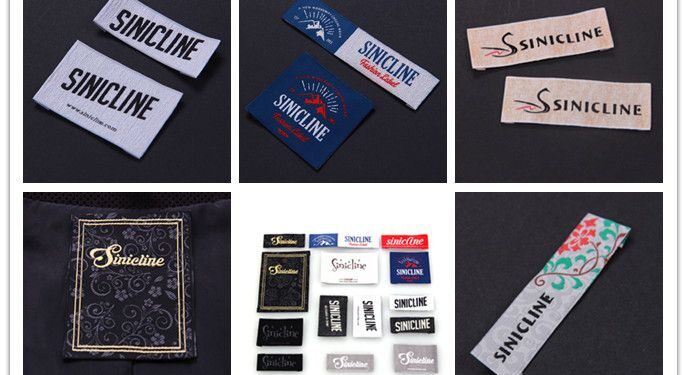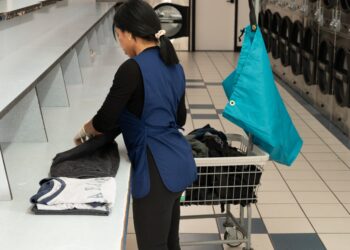In the ever-evolving world of fashion and apparel manufacturing, clothing labels play a crucial role in defining brand identity, ensuring product quality, and providing consumers with essential information. Whether you are a small clothing business or an established fashion brand, labels are far more than just tags attached to garments—they are powerful branding tools that communicate your story, style, and commitment to quality. Among the many types of garment labels available today, woven labels stand out as one of the most popular and premium options in the industry.
What Are Clothing Labels?
A clothing label is a piece of fabric, material, or tag attached to an item of clothing that provides important details such as the brand name, logo, fabric composition, washing instructions, size, and country of origin. Labels not only offer functional information but also enhance the visual appeal of a garment and reinforce brand recognition.
Different types of clothing labels serve different purposes:
- Brand Labels – Showcase the brand name or logo, building recognition and loyalty.
- Care Labels – Provide washing, drying, and ironing instructions.
- Size Labels – Indicate garment size (e.g., S, M, L, XL).
- Composition Labels – Display fabric content such as cotton, polyester, silk, etc.
- Country of Origin Labels – Mention where the product was manufactured, which can be essential for export and compliance purposes.
Whether sewn inside a t-shirt collar or attached to a pair of jeans, these labels carry significant value to both the consumer and the manufacturer.
Why Labels Matter in the Clothing Industry
- Brand Identity and Recognition
A clothing label is often the first thing a customer notices after design and texture. It represents your brand’s style, quality, and professionalism. A well-crafted label helps your clothing line stand out in a competitive market. Think of top fashion houses like Levi’s, Gucci, or Nike—each has a unique label that instantly connects customers to the brand. - Quality Assurance and Authenticity
Labels help customers identify genuine products. Counterfeit items often lack proper branding details, making labels a mark of authenticity. Woven or high-quality printed labels assure buyers that they are purchasing a genuine, well-made product. - Legal and Care Requirements
Many countries require clothing labels to include certain details such as fiber content, care instructions, and manufacturing country. Proper labeling ensures compliance with textile regulations and protects your brand from legal issues. - Customer Convenience
Care and size labels make it easier for consumers to maintain their garments correctly and find the perfect fit, increasing overall satisfaction and trust in your brand.
What Are Woven Labels?
Woven labels are made by weaving threads together on a loom to create text and design rather than printing ink onto a surface. This weaving process results in a durable, high-quality label that looks elegant and feels luxurious. Because of their long-lasting nature and professional appearance, woven labels are widely used by fashion brands, designers, and even small clothing businesses aiming for a premium look.
Woven labels are typically made from materials like:
- Damask (soft and detailed, ideal for high-end clothing)
- Taffeta (slightly coarse, suitable for outerwear)
- Satin (smooth and shiny, used for delicate garments)
Each type offers a different texture and visual appeal, allowing brands to choose what best represents their identity.
Advantages of Woven Labels
- Durability
Woven labels are highly durable and can withstand multiple washes without fading or fraying. This makes them perfect for garments that are worn and washed frequently. - Premium Appearance
The intricate weaving gives a refined and elegant finish that enhances the overall quality perception of a garment. Many luxury brands prefer woven labels for this reason. - Customization Options
They can be custom-designed with various colors, fonts, and sizes. Brands can add logos, taglines, or even QR codes for digital engagement. - Soft Texture
Especially in damask and satin woven labels, the smooth texture ensures comfort, making them suitable for sensitive skin and premium apparel. - Eco-Friendly Choices
Many manufacturers now offer woven labels made from recycled polyester or organic cotton, aligning with sustainable fashion trends.
Woven Labels vs. Printed Labels
While printed labels are more affordable and suitable for fast fashion or promotional garments, woven labels are a long-term investment in brand image. Printed labels may fade over time, especially after repeated washing, whereas woven labels maintain their integrity and color. The tactile quality of woven labels also gives a sense of craftsmanship and care—attributes that today’s conscious consumers appreciate.
How to Choose the Right Label for Your Brand
When selecting the perfect label for your clothing line, consider the following factors:
- Target Market: Premium brands may opt for woven or embroidered labels, while budget-friendly lines may choose printed ones.
- Garment Type: Outerwear, casual wear, or lingerie may require different label textures and placements.
- Design Consistency: Ensure the label design aligns with your overall brand theme and logo style.
- Sustainability Goals: Opt for eco-friendly materials if your brand promotes sustainability.
Conclusion
Clothing labels—especially woven labels—are much more than just small tags sewn into garments. They are an integral part of your brand’s identity, customer experience, and product value. A beautifully designed woven label can transform an ordinary piece of clothing into a symbol of craftsmanship, trust, and luxury.
In today’s fashion world, where competition is fierce and consumers are more brand-conscious than ever, investing in high-quality labels is not just an option—it’s a necessity. Whether you run a boutique or a large-scale clothing factory, woven labels can help you build a lasting impression that stays with your customers every time they wear your brand.










